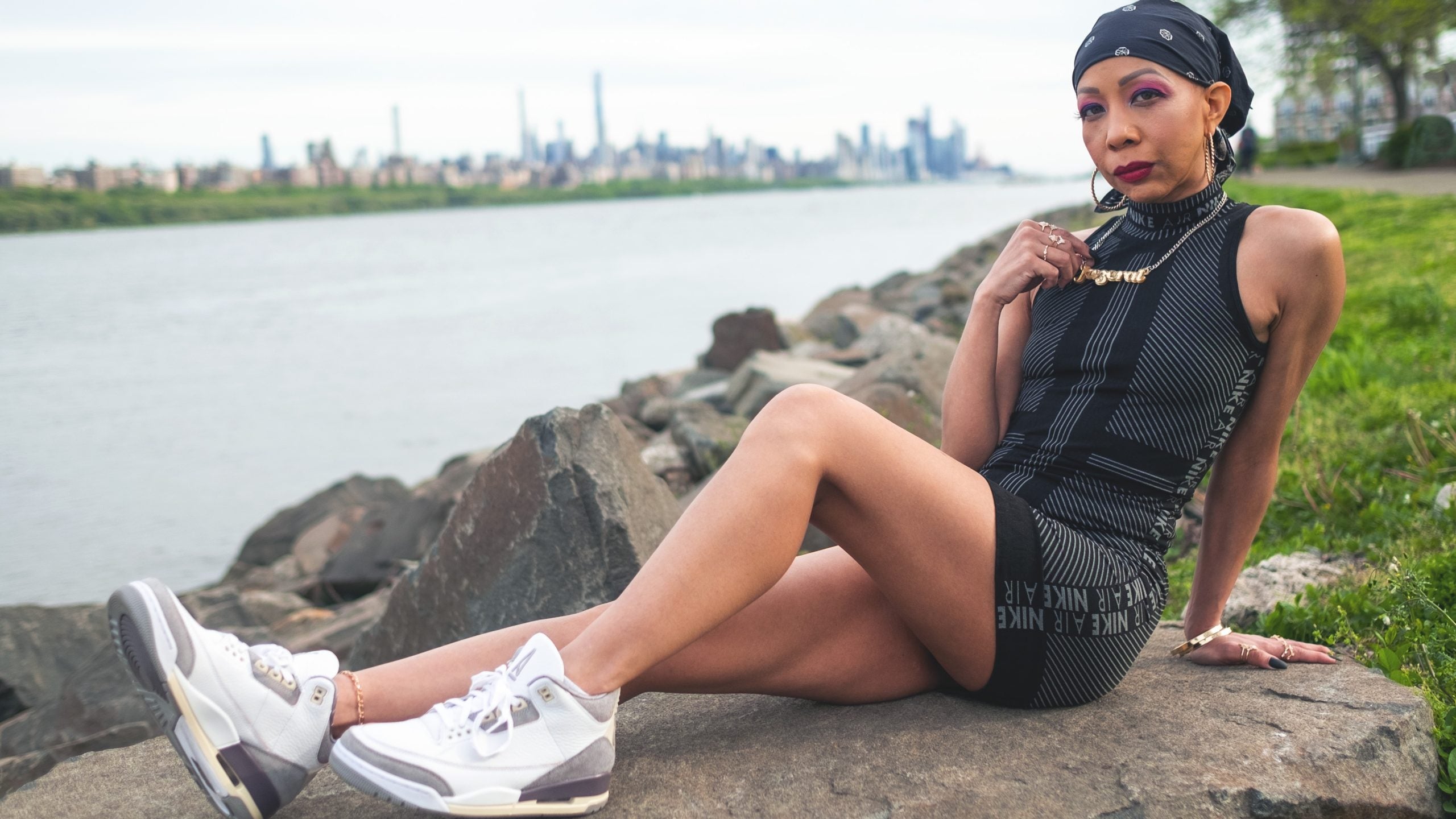
‘Sole Searching’ is a series that highlights Black women in the sneaker community, how their passion for footwear began, their thoughts on Black women in sneaker culture, and how they’re leaving their legacy in the sneaker world.
Jazerai Allen-Lord is the definition of 40 and fabulous. She joined our Zoom conversation with bronze eyeshadow to complement her green eyes, a baroque-inspired headscarf, and gold jewelry dripping from her ears and neck. It was giving Black girl luxury meets boho chic and I was loving every second of it. Her personality and aura were as chill as I’d expect, but I knew our conversation about kick culture was about to be loud and proud due to her work in the sneaker industry.
“I spend 20 to 30% of my week sitting down with young Black people trying to get into the business with one-on-one mentoring sessions, road mapping sessions, editing their portfolios, and then offering opportunities,” Allen-Lord told ESSENCE about her community outreach and philanthropic efforts in the sneaker industry. She describes True to Size as her third and newest baby, but noted it as a consulting agency that prioritizes the narrative of young women, Black women, and women of color in the sneaker biz.
“The core of my business model at True to Size is to build teams ‘true to size’ for the message of each project. I’m constantly hiring [and] bringing in photographers, writers, stylists, producers, and looking for ways to provide a doorway for people to get their first step into the sneaker business.”
When asked about some of her go-to sneakers today, she smiled and answered, “At my big age of 40 I’m like, ‘What can I put on that I could wear all day today?'”. Allen-Lord seeks comfort from meetings to going out with her children, and doesn’t focus too much on hopping on the latest trends. “I cannot chase a shoe around the internet. I can’t do it at 40 and it means my heart breaks because I’m not going to have that product. I’m finding myself more in today’s lens buying out of, ‘what am I going to be wearing more of instead of like what’s hot for me right now? What can I get the most use out of? What’s sustainable?’ I’m old. These are the things I’m thinking about now. What’s going to go forever for me?”
For the fourth installment of ‘Sole Searching,’ ESSENCE caught up with award-winning sneaker strategist and designer Allen-Lord about how she incorporates her love for sneakers into community outreach, the makings of a dope sneaker, and how her taste as a sneaker designer has evolved.
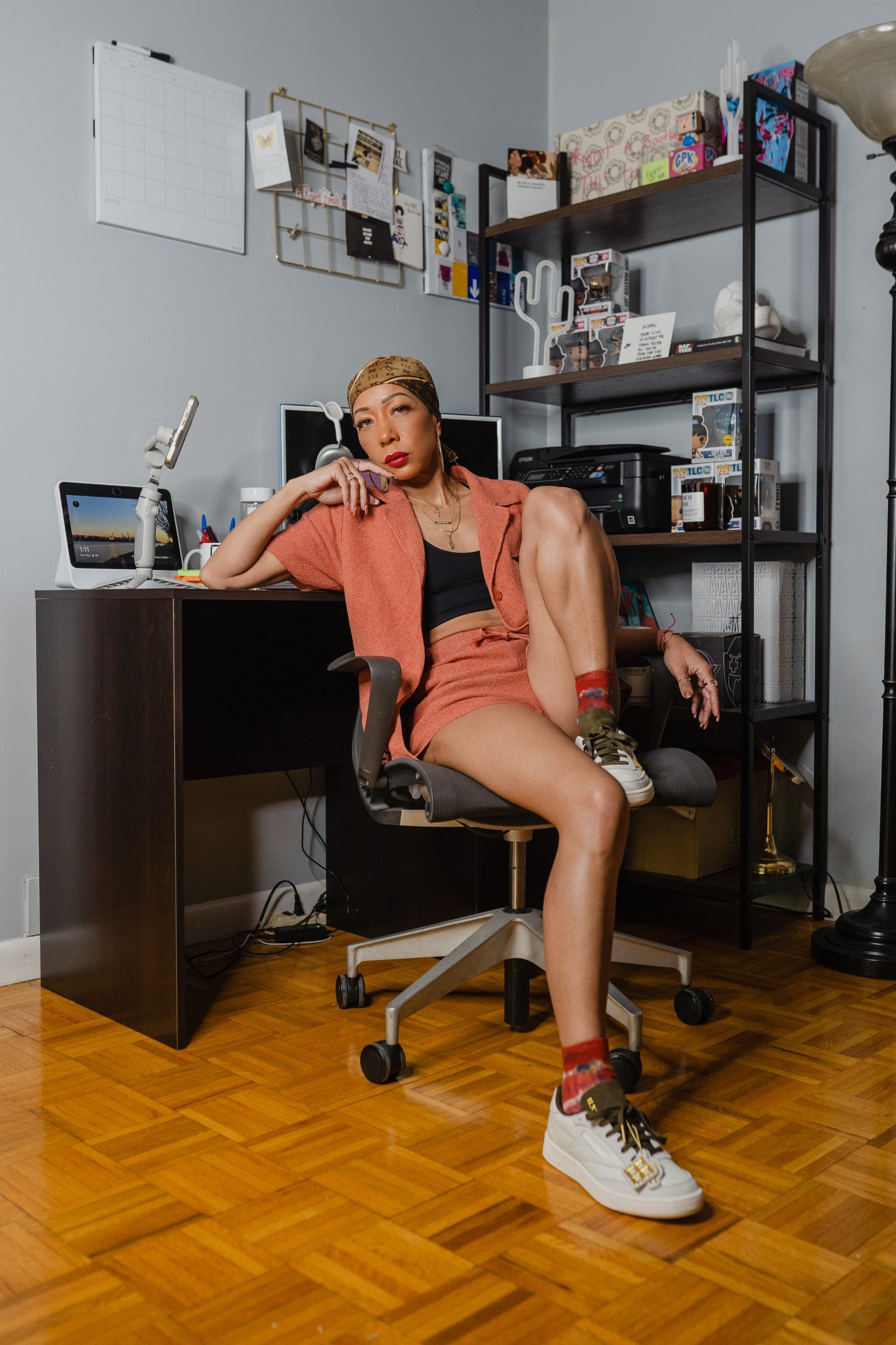
On when she first fell in love with sneakers:
“I don’t know if there was ever a time. I fell in love with sneakers because I grew up in this what used to be called a “tomboy aesthetic,” but this was always how I dressed. I had a male cousin who was six months older than me and my mom, who was an 18-year-old single mom with me, got a lot of hand-me-downs. I was always in little striped shirts, polos, and little sneakers with Black Crow on them and things like that. That was my vibe.”
“It was always a part of my natural aesthetic and my natural lifestyle, which is such a weird word to use today. My childhood lifestyle accommodated more rough and tumble items. I would say that I got into collecting probably when I was 17, 16, and I came into sneaker culture through skate culture. A lot of brands that were skate-centric eventually bridged into mainstream streetwear.”
On how she came up with the “sneaker strategist” title:
“I level people because I just made it up. Sneaker strategist is a term that I labeled myself after trying to describe what it is that I do in an elevator pitch way. I have worked in all different sectors of the sneaker business from marketing, editorial, and media, to PR and design, and was trying to figure out in each of those places – what was the through-line? What was the north star messaging of what I wanted to do, who I wanted to be, and what I wanted to say on my platforms? What tied all those things together for me was Black women and young creatives of color while trying to get them into both sectors of the business and telling stories in multiple ways for both sectors. It became what a lot of the inbound work was for.”
“When brands like New Balance, Nike. the Jordan brand or Reebok want to tell a story that is true and authentic to young women, Black women, women of color, and women that want to get into design, they often will come to me and say like, ‘How do we tell this story? Who should we use to tell this story?’ Using a proprietary process that we have called check the fit. We make sure that the right product is with the right person; the right person is with the right messaging; the right messaging is with the right brand, and all of those pieces along the line fit together.”
“That in itself is strategy, and I think that strategy oftentimes is looked at as really not sexy work. A lot of people don’t know that what they want to do in the business is strategy. Sometimes people say, ‘I want to be a designer because I want to design events,’ or ‘I want to design a special friend- and-family pack.’ Well, the designer doesn’t always do that. A lot of the time, the marketing team does that, and the PR team does that. The person who decides what we’re going to do is the strategist.”
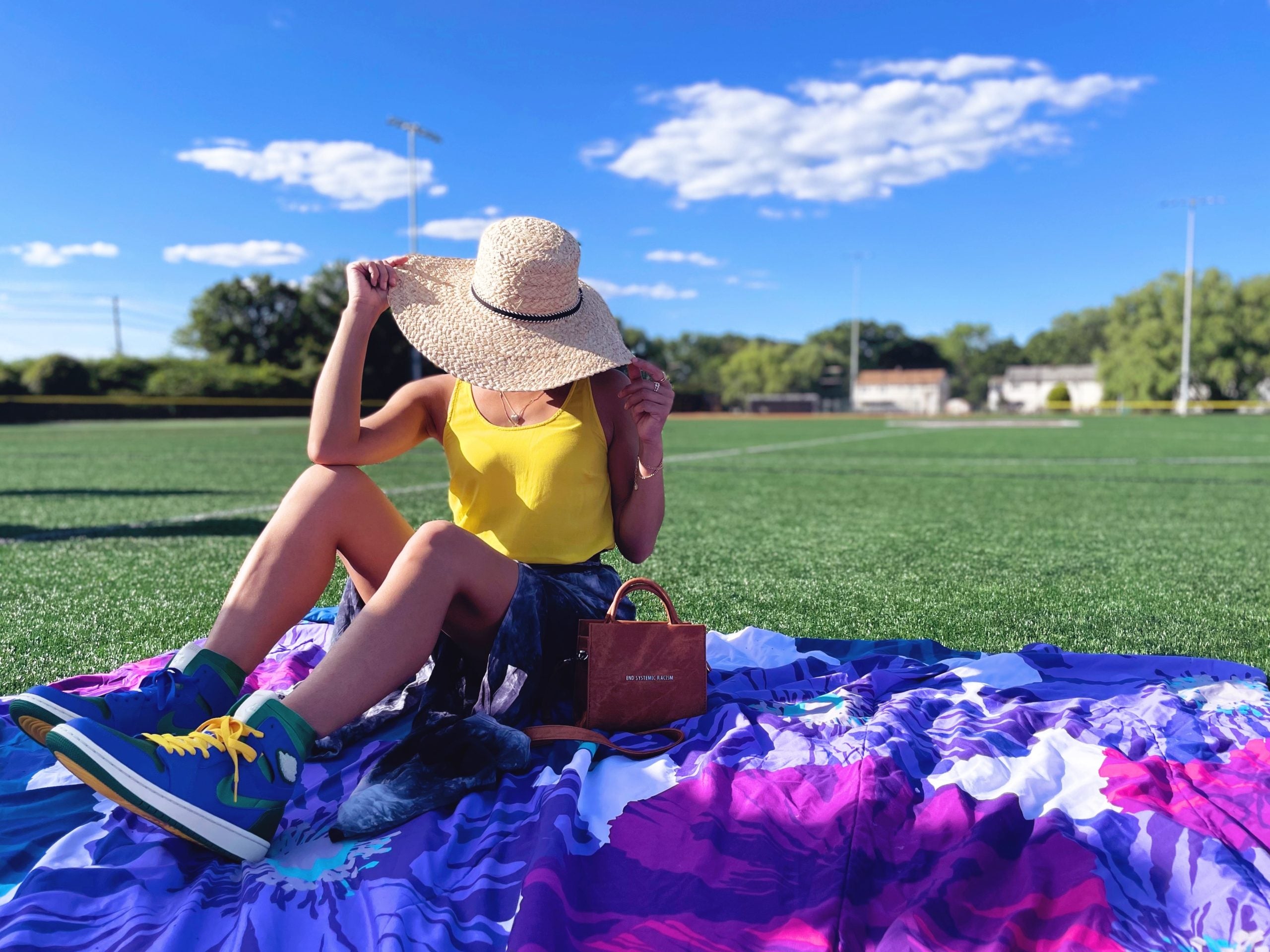
On the makings of a dope sneaker that’ll do well on the market:
“Personally, I think the number one thing is the story, which is a controversial thing to say today because there is a large subset of a consumer today. At the top tier are story and resonance. A lot of time resonance can mean story, but resonance also can mean, ‘I just really vibed. I love green, this was an all-green shoe, and it resonated with me and where I’m at right now. Then I think other things that make great shoes are materials and how accessible is this shoe to people as far as we could fall in love with it, but can we actually attain it? Is this going to be something that is going to be $2,000 two weeks from now, and am I going to have a real purchase opportunity? I think those things, which a lot of times have nothing to do with design really affect whether or not that’s a good shoe or not.”
On her very first sneaker design:
“For my first shoe in 2013 or 2014, I did a few pieces with Adidas through influencer programs. I think the first piece I did was a shell toe. It was themed after Kill Bill‘s Beatrix Kiddo. Every shoe that I did was before I did my shoe with Reebok was really designed after a female heroine in some series that I loved – Shera, Storm, and it was Beatrix Kiddo in the very first instance. Yellow and black with some red detailing to indicate blood from the crazy 88 fight scene that happens with her. For me, that was a big moment because it was a story that I got to tell. A strong woman’s story that wasn’t pink [or] purple. It said ‘Kiddo’ on the side and it was a pretty non-gendered shoe, a non-gendered colorway, a non-gendered story, but a strong woman as well at the center of it.”
On how she has evolved as a sneaker designer over the years:
“It doesn’t necessarily have to do with the design process. I think in my 20s and early 30s, it was really exciting for me to see my story told in a product. Today it’s far more exciting for me to make sure that product is accessible. Instead of having my name on the shoe, I love seeing my name on the collection or not even having my name. One of the proudest moments I’ve had in my career on the design side is working with Palladium in 2020 and 2021, and working with them on what it might look to open up women sizing, to include trans-women who are often sized out of women’s products. Those are the types of things that I’m passionate about at this phase in my career – accessibility and inclusivity. Making sure that everyone can shop everything and if I can tweak the design in that way, that to me is true innovation.”
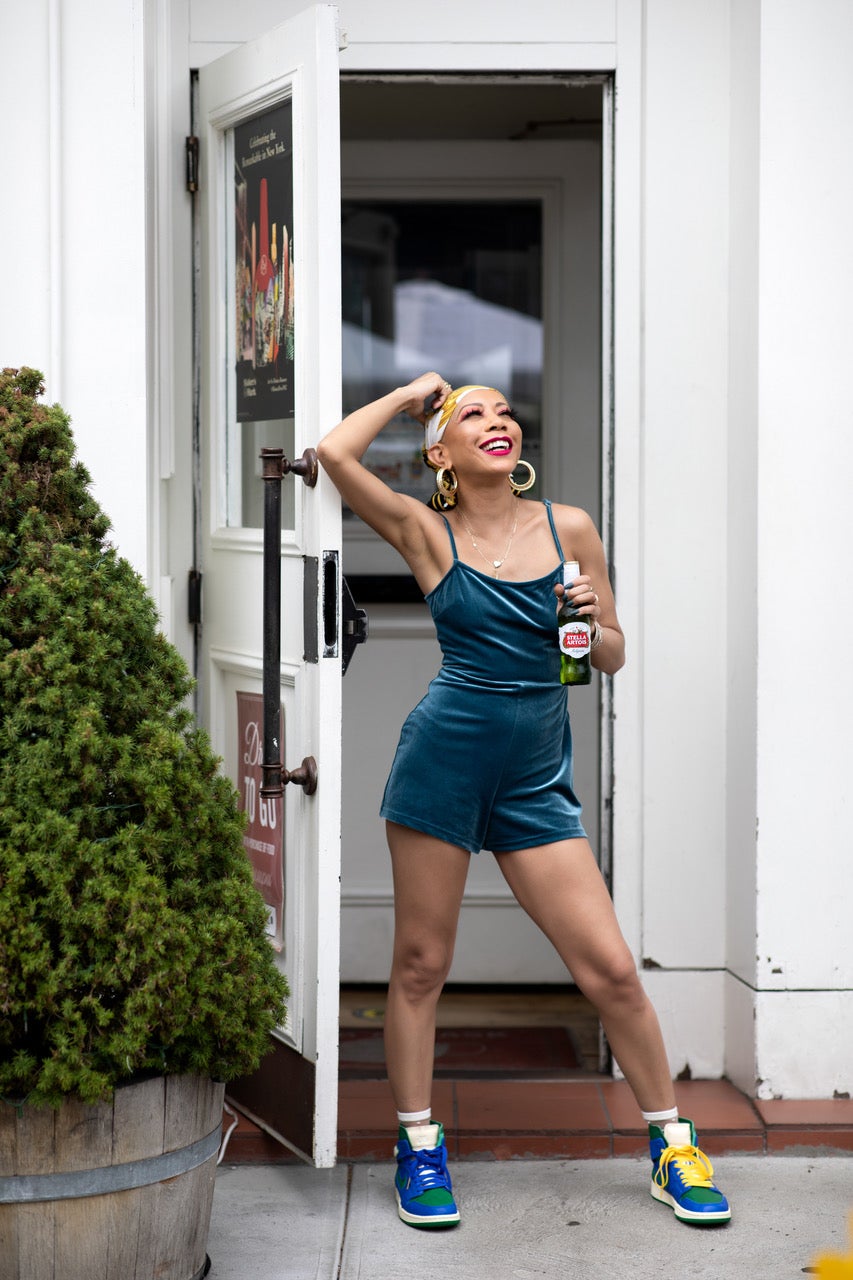
On her community outreach efforts through True To Size:
“It’s a consulting agency that I founded a year ago and it’s in partnership with my sister agency Crush & Lovely that I worked at for five years. In learning the agency business, I built an experiential offering that essentially became fruitful enough for it to stand on its own and it needed enough breath to stand on its own. Now at True to Size, we tell stories for most of the footwear brands, as well as a lot of women’s stories outside of footwear. We work with ESPNW [and] we work with Steven Tyler’s Janie’s Fund in telling women’s abuse and sex trafficking stories and raising money. That’s really where my heart is at this time to make sure that we’re telling true stories. That’s what True to Size is for me really about. I’m not trying to launch the next hottest award winning campaign for me. It’s a win if five people have cried and said, ‘I felt that.'”
On the notion of working in the sneaker industry as a Black woman, in comparison to white male counterparts:
“I wouldn’t say it’s working harder. I’d say you have to go further. That is something that I’m seeing change slightly over the last couple of years, but I’ve seen more intention by a lot of the brands where I did not see that intention before. One of the most frustrating parts about this business is that it’s a relationship business. It’s really about who you know, who’s willing to take a chance on you, who’s willing to put you in the room – and a lot of Cis-white men know each other. They play golf together. They went to college together. They’re very exclusive in their gatherings and it was a hard shell to break into. Black women, where we have the power, specifically in the sneaker industry, is that we set the tones and trends.”
“We are the foundation of streetwear. Everything is mimicked and modeled after our existence and our being, not even talking about the style. Just our existence and our being is literally the archetype of streetwear. We deserve to not only have a seat at the table but to be building those tables, building those rooms, and filling those rooms. What we’ve seen with the ‘social injustice movement’ is that people are less afraid. The more of us that are less afraid, are using our voices, are speaking up, the more it’s easier. It greases those wheels of having to go further. The more people that you have bringing somebody else along also shortens that journey.”
On how the lack of Black woman representation in the sneaker space has pushed her work, both strategically and creatively:
“My business wouldn’t exist if we had representation and people ask me, ‘When are you going to stop?’ I would love to stop today and I can stop when we’re all sitting down in the room. I think that to me is a gift and a curse at the same time. It’s very heartbreaking to know that you have to go this far if you want to see the change that you want to see. The only reason the business is in existence is because I couldn’t tell the stories at the places I was working before and it wasn’t happening. The change that I wanted to see wasn’t happening. If you want to do it as Black women, it’s like we go and do it ourselves. Here I am doing it myself, but it’s not just myself. I have a strong team of women and a strong team of Black women, a lot of advocates, allies, and supporters, and the Black Footwear Forum is one of them. Just being able to have a community of people that look at you, they may not be in your office or in your town, but they’re available and they’re there.”
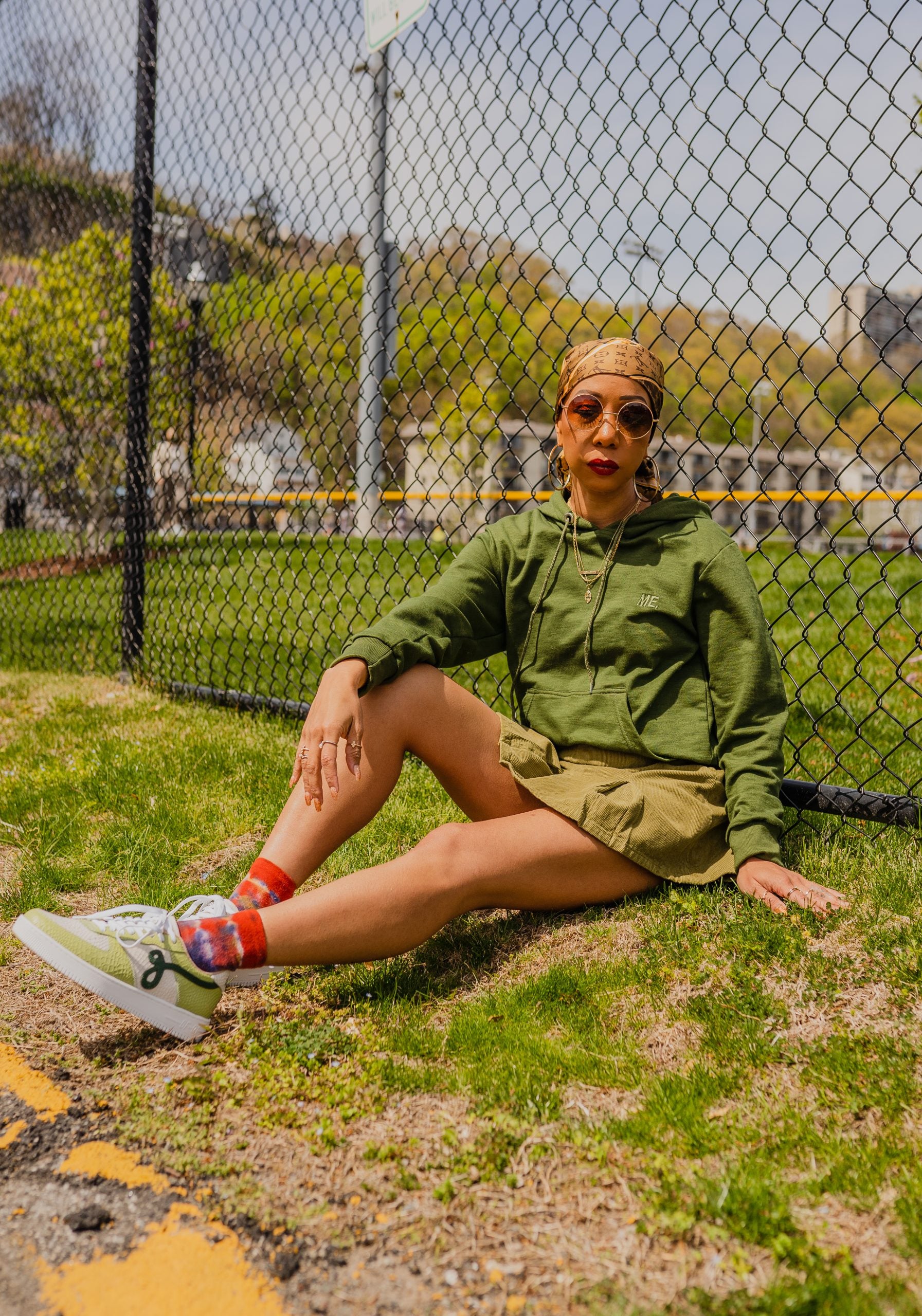
On the legacy she hopes to leave in the sneaker community:
“I hope my journey has taught women to be unafraid, whether they agreed with me or not. That for me is big. I hope that I’ve displayed what living loud looks like. I hope that I’ve made you less scared to take a step in doing something. That’s what I hope my legacy is and whether you liked it all the time, whether you agreed all the time, I hope that it taught you to step out of your skin and to be more with what you have.”
